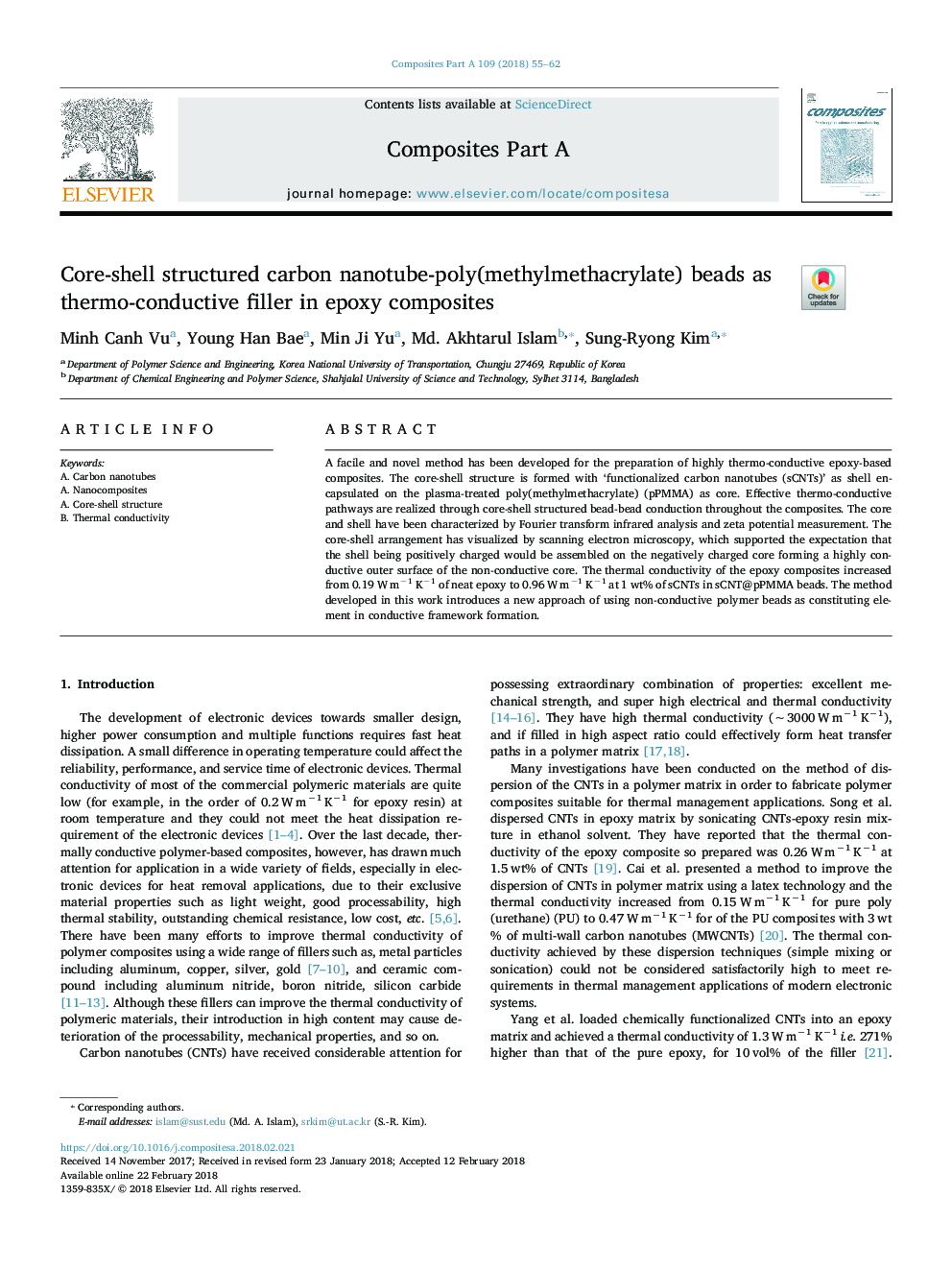| Article ID | Journal | Published Year | Pages | File Type |
|---|---|---|---|---|
| 7889527 | Composites Part A: Applied Science and Manufacturing | 2018 | 8 Pages |
Abstract
A facile and novel method has been developed for the preparation of highly thermo-conductive epoxy-based composites. The core-shell structure is formed with 'functionalized carbon nanotubes (sCNTs)' as shell encapsulated on the plasma-treated poly(methylmethacrylate) (pPMMA) as core. Effective thermo-conductive pathways are realized through core-shell structured bead-bead conduction throughout the composites. The core and shell have been characterized by Fourier transform infrared analysis and zeta potential measurement. The core-shell arrangement has visualized by scanning electron microscopy, which supported the expectation that the shell being positively charged would be assembled on the negatively charged core forming a highly conductive outer surface of the non-conductive core. The thermal conductivity of the epoxy composites increased from 0.19â¯Wâ¯mâ1â¯Kâ1 of neat epoxy to 0.96â¯Wâ¯mâ1â¯Kâ1 at 1â¯wt% of sCNTs in sCNT@pPMMA beads. The method developed in this work introduces a new approach of using non-conductive polymer beads as constituting element in conductive framework formation.
Related Topics
Physical Sciences and Engineering
Materials Science
Ceramics and Composites
Authors
Minh Canh Vu, Young Han Bae, Min Ji Yu, Md. Akhtarul Islam, Sung-Ryong Kim,
